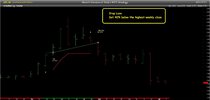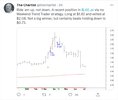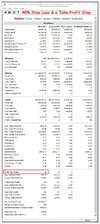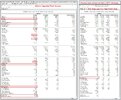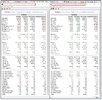- Joined
- 28 December 2013
- Posts
- 6,392
- Reactions
- 24,319
Nick Radge shared some work he's doing on his (MR?) day strategy on twitter recently.

Let's talk about when we should exit a position
@Newt recently remarked that Nick Radge made a post on Twitter about one of his strategies. As I had a few moments I thought I would hunt that post down but I found something more interesting from Nick. Every time I mention or reference Nick's work it always creates interest.
This is "The Chartist" post that sparked my interest
When looking at Nick's chart of (LKE) the exit didn't seem right to me. I have a fair understanding of Nick's "Weekend Trend Trader" Strategy even making a few posts about it.
Over time
I've found Nick's WTT strategy was a little slow in exiting a position. Why? because of the generous 40% initial stop loss used in his strategy. Using a wide 40% stop loss always results in giving back some open profits & the chart below didn't. On the flip side having a generous 40% Stop Loss allows more time in a trend reducing the whipsaw effect.
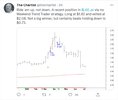
I have changed computers twice since coding my version of Nick's WTT
There is so much written about this strategy it's not difficult to code. I've quickly set about finding the parameters once again to understand why the exit was so sharp, without giving back a chunk of open profits.
My mission was to arrive at the same signals
Now, if I can do that, I'll be able to understand the stop loss used in the chart above. Moving on, I'll throw up some charts to (a) mimic the entry & exit for (LKE) that is disp[layed in the chart (b) display an alternative stop loss & (c) determine if the exit can be sharpened. The most important part of the exercise for me is to determine what parameters Nick is using in the chart above?
Skate.




